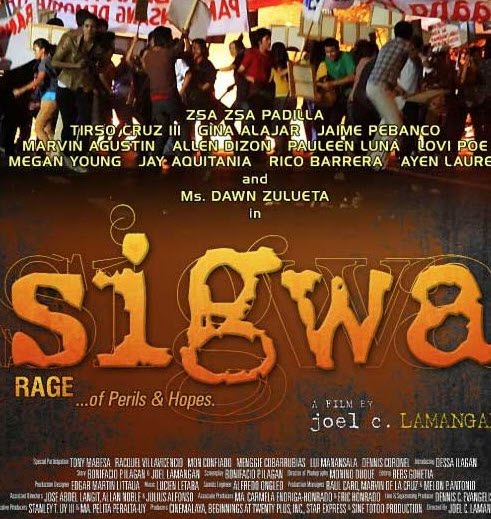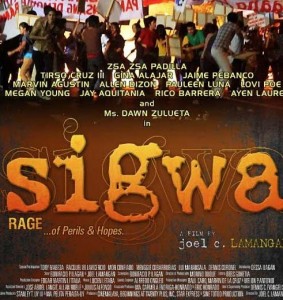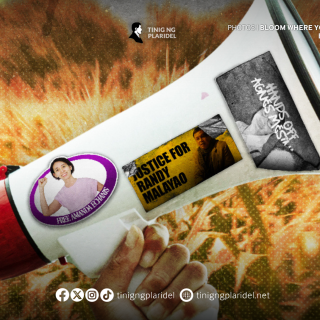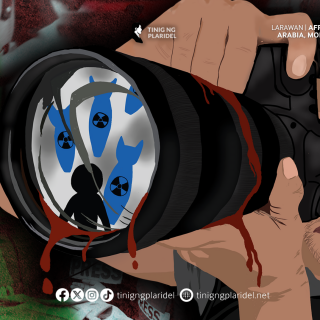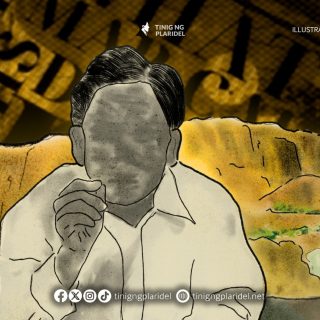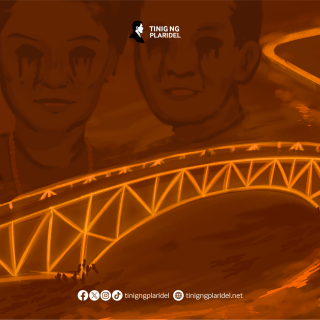By Ranel Ram Cheng
The First Quarter Storm of 1970 is remembered in today’s history books as the height of student activism against the Marcos government. It was a period marked with violent clashes between government troops and activists that eventually led to the declaration of Martial Law in 1972. More than just a period of rage against a fascist ruler, the FQS bore a generation of courageous and idealistic youth that created the mold for the student movement that we know today.
Forty years later, however, the country still faces the same social problems that the FQS vehemently fought against. A new generation has been born without even knowing what the First Quarter Storm was about. It would seem that the rage of the 70s has become but mere paragraphs in the archives of history.
The movie SIGWA is a fitting tribute to the First Quarter Storm. Directed by the acclaimed Joel Lamangan and filled with some of the country’s brightest stars, the movie brought the events of the FQS to life. The story takes place in the present, initially told by Dolly (Dawn Zulueta), a Fil-Am who covered the youth movement as a junior correspondent (Megan Young) and is back in search of her daughter whom she left before she was deported during Martial Law. Her journey brings her to meet old comrades and gives the audience a rather intricate picture of their personal lives as well as how the movement and its members evolved. A great part of the movie was spent guessing who became what and their reasons for doing so.
Flashbacks, non-mainstream roles
The plot also attempts to educate the audience on the movement itself with actual facts (like mentioning that their “friend” Judy who went on to become UP Faculty Regent). The story relied much on flashbacks to set the mood of the 70s as well as to paint a picture as to how their involvement in the FQS shaped the present lives of the characters. Some details, however, especially on the years and dates, were a bit confusing and made some lines sound more like a history lecture rather than conversation. The story did make amends with powerful one-liners and witty remarks that proved that the student activists listened well to their professors, combining theory and social practice.
The film also gives an in-your-face look to social issues like poverty, injustice, and extrajudicial violence—themes relevant today as it was in the 1970s. It also went “behind the scenes” of the movement, bringing the audience to the underground of the FQS, all the way to the camps nestled in the mountains, thus showing the human side of the revolution which is not usually seen or heard of.
Another plus for the film was how the cast, usually associated with mainstream roles, blended well with each other in their respective roles. The continuity in matching Dawn Zulueta with Megan Young was just perfect. Much more can be said of the confrontation scenes of Tirso Cruz III (hailed as this year’s Best Supporting Actor) and Zsa Zsa Padilla, which showed that politics indeed becomes personal. Where the film lacks in terms of production value, it recovers with the heartfelt portrayal of the characters.
In the end, the story of SIGWA is more than just a story of the First Quarter Storm. It echoes the call of those who lived through it—to change a system that continues to favor the wealthy few while falling deaf to the plight of the suffering many. The movie thus becomes a fitting tribute to the bravery, idealism, and sacrifices of the youth who fought during that time.
The movie ends with a high note, ever hopeful that the seeds that the youth sowed in the 1970s have begun to bear fruit and that one day, the nation shall taste the sweet victory that should come after the Storm.

